English | Dutch |
|
| Qom, home of Iran's religious clerics | |
Kashan (Iran), February 18th 2013
|
|
| |
|
Qom is after Mashad the holiest city in Iran. It is also one of the fastest growing cities of the country and it is the home of the most religious clerics that rule Iran since the Islamic revolution of 1979. We visit Qom as a daytrip from Tehran to see the mausoleum of Fatemeh, the sister of Imam Reza, who is buried here. We are also curious to see if the women in Qom are dressing themselves in the same way as their fellow-women in Teheran. In some parts of Tehran, especially in the northern part of the capital, the law concerning the way ladies should dress, isn’t taken that seriously. Some Tehrani women are specialised in dressing themselves as attractive as possible, just within the acceptable boundaries of the rules. Their style, in where they wear the headscarf as far as possible on their heads, in a way that can show as much as possible of their beautiful hair, is done in a way that you can’t deny that these women are sexy. They are so stylish, that they are absolutely not inferior to most western fashionatas. Western media often hint that all young women in Iran are dressed that way. But that isn’t true. And that is especially visible in Qom. When we walk to the main entrance of the Hazrat-e Masumeh shrine, we are wondering ourselves if they let us in as non-Muslims. But this doubt seems to be unjust. When we ask a security man if we can visit the shrine, he says immediately yes and is even willing to arrange a chador for Ivonne, which she has to wear over her manteau and headscarf. It isn’t that easy to wear such a tent in a proper way. |
|
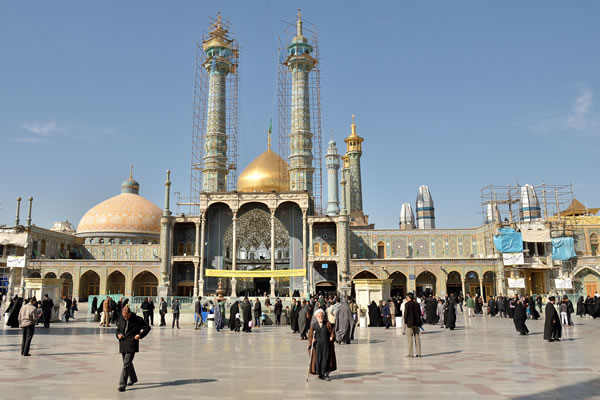 |
|
A view on the fabulous Hazrat-e Masumeh shrine |
|
The security man arranges a private guide for us and he takes us through the crowds to the main square in the shrine, with great views on the mirror façade, the golden dome and the tall minarets. We are surprised when the guides summons us to take photographs, because we read somewhere that taking photo’s in the shrine is strictly prohibited. Ivonne tries to make some film, but filming and at the same time keeping the chador in its place isn’t a good combination. After visiting the square, the guide takes us to a smaller side-square from where we can see the men praying in the direction of the grave of Fatemeh. We never thought we could visit this part of the shrine, because from here we have a good sight on the most holy part of the Hazrat-e Masumeh shrine, the burial place of Fatemeh. Of course, we were not allowed to take pictures here, but this sight will be on our retina forever. | |
 |
|
The chador is the way to dress for women in Qom |
|
| After visiting the shrine, and after saying goodbye to our guide, we decided to explore the area around the shrine. It is busy at the nearby bazaar, not only with women who are shopping for a new chador, but also with men who are leafing through religious book in small book shops. But the most sold products are without doubt the local cookies, which are sold tins available in all sizes. Qom is a busy city, but in no way as chaotic as Tehran. It is striking to see that almost all women are dressed in a chador, while these black tents are more or less disappearing in some parts of Tehran. Also the eye-catching hair dresses and makeup of the Tehrani women is non-existent here. The women in Qom are much more modest and that is also what they expect from visitors, also foreign tourists. But people here are still as friendly and hospitable as in other parts of the country. They are always interested in a little chat to see where you are coming from and what you think of Iran.
The Iranians of Qom and some parts of Tehran differ from each other a lot. They live in the same country but their ideals are probably way apart. All we can hope is that Iran will develop itself as a country where both ideals are respected, but if this is going to happen is the big question. Time will tell us. | |
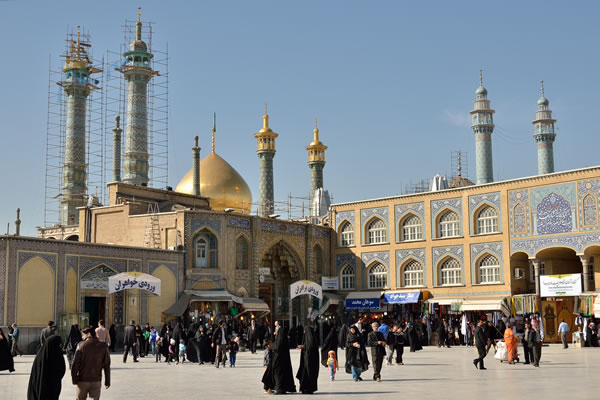 |
|
The main entrance of the shrine |
|
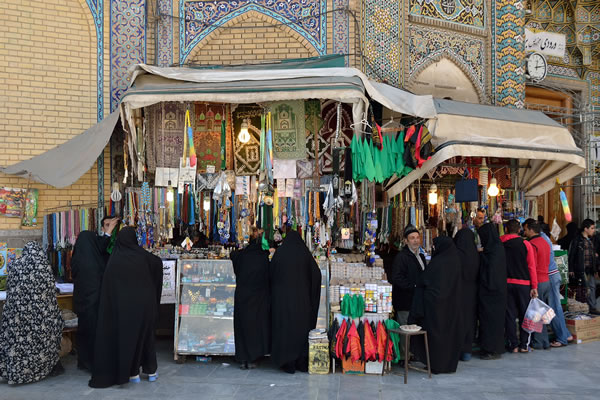 |
|
Shopping for souvenirs |
|
 |
|
An old Paykan taxi, becoming less common in Iran |
|
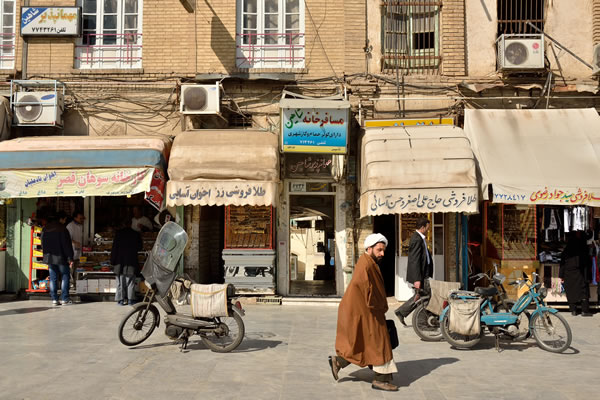 |
|
Little shops around the Astane square |
|
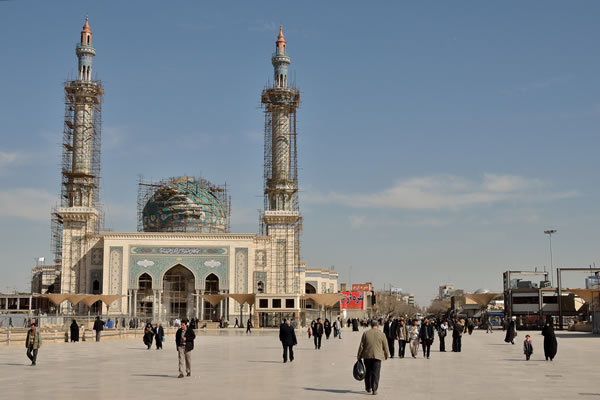 |
|
The Imam Hassan Mosque |
|